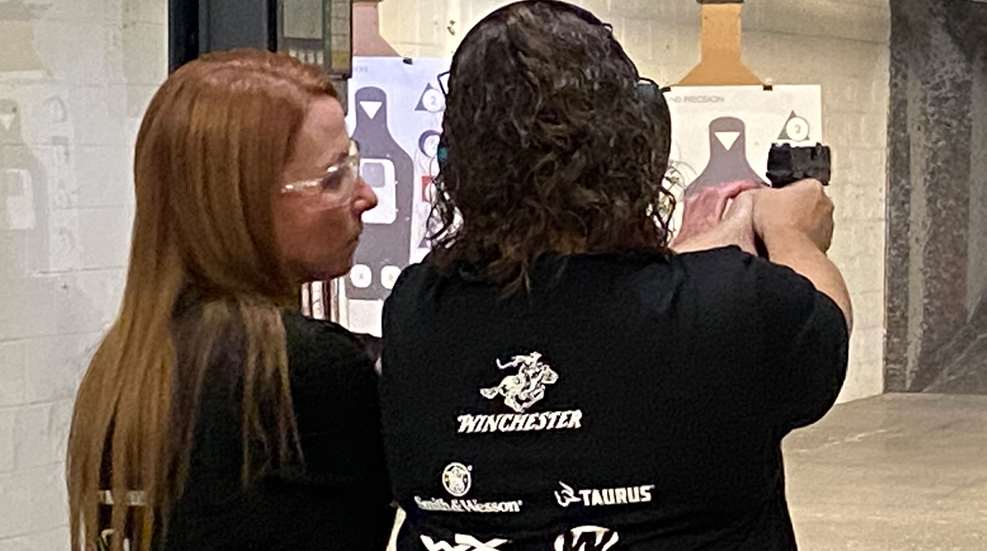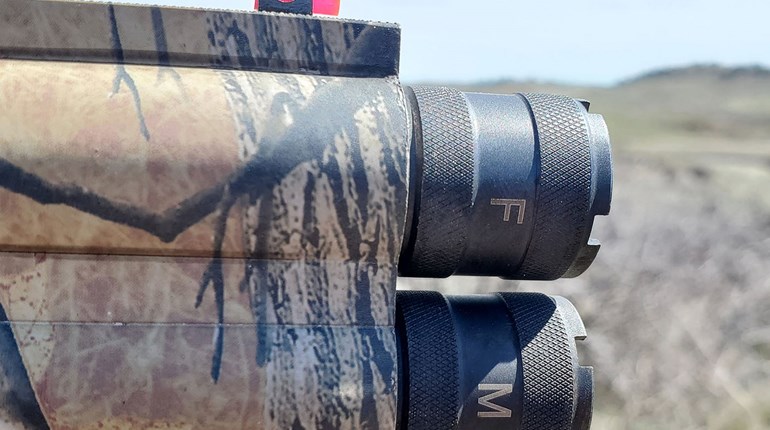
To those of us who have been around firearms for a long time, some things are second nature. We’ve done them so many times that we don’t even think about how to do them or why we do them the way we do. Things like flicking on the safety or doing a mag swap are so simple to us that we forget that they’re not simple to everyone.
Years ago, I was attending a media event cosponsored by a gun company and an ATV company—some of the media attendees were from the gun industry, some were from the off-road industry, and a few were crossovers. The instructors handed us all a just-introduced striker-fired 9 mm pistol, had us load and holster them, and lined us up on the range to run through some simple drills as we got used to the new guns.
We were instructed on how to draw properly, and we fired a few rounds as directed. Then, for reasons I don’t remember probably related to a reloading drill, the head instructor gave the command to “hit the magazine release and drop the mag.” And I’ll never forget the lesson I learned when the guy standing next to me looked over and whispered, “What’s a magazine release?”
It was a wake-up call for me that one of the most basic actions of gun-handling, an action I could intuitively do without looking or really even thinking, was completely foreign to a new shooter.
The fact is, when teaching someone to shoot, we make a lot of assumptions and therefore sometimes fail to explain the most basic things. When you’re familiar with guns, it’s easy to feel like “everyone knows how to do XYZ” when in reality, they don’t, and it needs to be spelled out for them. The next time you’re teaching a newbie how to shoot and handle their gun, don’t forget to explain these most basic factors that your new shooter might not know and might be embarrassed to ask about.
First, safety rules: Obviously, every new shooter should be given a rundown of the basic rules of gun safety. Explain important range commands, because while you’ve been hearing “range is hot” and “range is cold” for years, those phrases make no sense to someone who hasn’t.
Basic manual of arms: Give the new shooter a simple rundown of what every button and lever does. Explain the opening lever and the selector switch on an over-and-under shotgun; explain the mag release, decocker, safety, hammer, and any other moveable parts on a semi-automatic handgun; etc.
Safeties: Safeties come in so many varieties. Some are pushed up and down on the tang with the strong-side thumb, some are pressed in with the strong-side index finger, some are flicked down with the thumb. Take special care to explain how the safety works on whatever gun your new shooter is using, and don’t assume they’ll be able to tell when the safety is engaged and when it’s not. “Red means fire” is a pretty easy way to help them remember, as many safeties will show a red dot or ring when the gun is ready to shoot.
Sight pictures: As we’ve learned in previous articles, the sight picture—what the shooter should actually see when they’re on target—is different depending on the firearm being used. Scopes and red-dots are pretty self-explanatory once the shooter knows to focus on the reticle or dot, not the target. But shotguns and handguns are a little trickier. I was shooting handguns (pretty poorly) for years before I worked up the nerve to ask someone if the center dot in a three-dot sight picture should be directly on top of the thing I wanted to shoot or just below it so I could still see the target. I didn’t know, and your new shooter might not, either.
Loading mags: You’ve been loading mags so long that you forget it’s not always immediately obvious to a newbie which direction the ammo is supposed to go in. And it’s not always immediately obvious which direction an empty mag is supposed to face when it goes back into the gun, either! Help your newbie out by explaining and demonstrating this a couple of times.
Grip: A proper grip doesn’t come naturally to new shooters, and while this isn’t such a problem with rifles and shotguns, it certainly can be with handguns. If you hand a brand-new shooter a handgun of any type and tell them to grip it with two hands, there’s a decent chance they’re going to cross their thumbs over top of each other across the backstrap of the gun. While this works fine on most revolvers, it’s dangerous on semi-auto pistols, as the shooter is likely to lose a chunk of skin when the slide comes back after the shot. Demonstrate proper grip to a new shooter, and don’t let them fire until you’ve approved the way they’re holding the gun.
Stance: Almost any new shooter, when holding a gun out in front of them preparing to shoot, will naturally lean back from the waist as their body attempts to counterbalance the weight. This is a mistake that ranges from uncomfortable and unsupportive to downright dangerous, as recoil can rock the shooter back onto their heels. Teach a new shooter proper stance and watch that they’re leaning slightly into a shot, not away from it.
What it feels like (and sounds like): Explain the trigger to a new shooter and let them dry-fire the gun a couple of times. Triggers vary so much—if they’ve shot bolt-action hunting rifles with 3½-lb. triggers but are brand new to handguns, they’re going to be surprised by what it takes to operate a heavier trigger on, say, a double-action pistol.
I always demonstrate a few shots for a new shooter before I let them handle the gun, to give them a feel for the noise they’re about to experience. Then I explain what to expect in terms of recoil: “This is a .22 LR, and you won’t feel any kick at all” or “The gun’s going to kick back when you shoot it, but it won’t hurt as long as you keep it firmly tucked into your shoulder” or whatever applies. People are much less nervous when they know what to expect.
We were all new shooters once, and for some of us, that was so long ago that we have forgotten what we didn’t know when we were just getting started. Don’t assume that a new shooter knows even the most basic fundamentals of gun handling, safety and shooting.














































